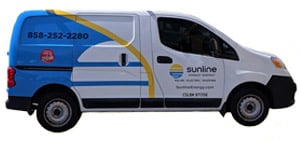The other day, we read an interesting article that opened with:
California’s electrical grid has a problem — a nice problem, but a problem nonetheless: The state often has too much power.
And it’s true.
Even with dwindling hydroelectric resources and closure of the San Onofre nuclear power plant, California’s utility grid often receives more electricity than it can possibly handle.
Like most of America’s electricity infrastructure, our power grid is quite old. And utility companies haven’t invested sufficient time and resources updating all of this outmoded infrastructure. Given their monopolistic control of the state’s power supply, they haven’t had much incentive to.
Until recently.
The Rise of California Solar Energy and Wind Power
10 years ago, solar energy was basically a fringe technology – reserved for environmental nuts and mega rich celebrities. And wind power was practically unheard of.
Today, nearly 23% of the state’s electricity comes from renewable power sources like solar and wind. And by 2020, that number is required to jump up to 33%.
Although much of this capacity is utility-scale renewable energy, there is also a lot of residential and commercial solar capacity as well. We’re talking about small-scale rooftop installations scattered throughout the state. Although each one of these PV systems might generate only several thousand watts, they are collectively feeding untold sums of clean power into the grid.
In fact, there is so much solar electricity that utilities are redefining what “peak demand>” means. Daytime utility rates used to be the most expensive. Now they are some of the cheapest.
And this growth has been staggeringly fast. In fact, California currently boasts 50% of America’s total PV capacity, meaning that it generates more solar energy than the other 49 states combined.
According to VP of operations for the California Independent System Operator, Eric Schmitt, “I’ve seen more changes in the past 3 years than the previous 20.”
How Can “Too Much” Renewable Energy Be a Bad Thing?
The problem isn’t really renewable energy (you can’t have too much). The problem is the variable nature of renewable energy.
Sudden dips in sunshine or unexpected bursts of wind are difficult to anticipate. But utilities have to match electricity capacity with expected demand. This is relatively easy to do when working with fossil fuel resources like coal, oil, and natural gas. But when dealing with Mother Nature, demand management becomes way less predictable.
Some utilities are trying to fix the problem by slowing the growth of solar – especially distributed solar installations on residential and commercial rooftops.
But that’s just stupid. Having more renewable energy is a good thing for the environment (and people’s pocketbooks). We shouldn’t be creating obstacles – we should be looking for solutions.
So what is a viable solution to these utility woes?
Investing in Better Solar Storage
The most promising strategy involves bringing on more solar storage throughout the grid. Utility-scale batteries can easily capture unexpected surges in solar or wind power throughout the day. And when the sun isn’t shining and the wind isn’t blowing, these batteries could redirect stored electricity wherever it is needed most.
The grid would never become overtaxed. And there would be no need to slow down solar’s growth. Batteries would actually allow us to invest in even more PV resources.
So why haven’t we done this yet?
Well, historically, solar batteries have been quite expensive. But this is changing rapidly – both at the utility level and residential level. And in the coming years, on-site battery storage for solar energy will likely become the default option for all future PV installations.
To learn more, contact us today for a free consultation.

